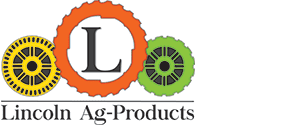FREQUENTLY ASKED QUESTIONS
- How much do the plates cost?
- All the plates, filler rings and adaptors are $85 each
- Refer to our pricing sheet for more information (Pricing List PDF)
- How much is shipping?
- Standard UPS Ground is $25 per order
- UPS Next Day Air is $80 per order
- UPS 2nd Day Air is $40 per order
- UPS 3rd Day Select is $30 per order
- UPS C.O.D. is $18.00 per order
- *All shipping prices are for orders of up to 100 plates, shipped within the continental United States; excluding Alaska and Hawaii.
- Do you ship Internationally?
- We ship UPS Standard International to Canada for $35 per order.
- Please call or email for shipping quotes to all other countries.
- When will my order ship?
- Orders received by 12noon MST normally ship the same day.
- All other orders are shipped the following business day.
- I noticed you are located in Colorado, are you the same company that was in Lincoln, NE?
- Yes, we relocated to Colorado in 2010. We are still owned and operated by the same family since 1959.
- There are so many different plates available, how do I decide which plate I need for my seed?
- Please refer to our info packet for a seed sizing guide (Seed Sizing Guide PDF) as to which plate you need for your seed.
- Or feel free to send us a small sample of 10-20 seeds for a plate recommendation.
- Can I send in seed for a plate recommendation?
- You can definitely send in seed for a plate recommendation.
- Send 10-20 seeds, including the largest seeds in the sample
- Wrap them up so they do not get crushed by the postage machines.
- Bubble wrap envelopes work very well.
- Include your contact information and type of planter and we will typically email you with a plate recommendation the same day we receive the seed.
- Do you have plates for various vegetables such as Pumpkins, Watermelon, Cucumbers etc…
- We definitely have plates that work with most all types of seed.
- Please refer to the info packet for our seed sizing guide (Seed Sizing Guide PDF) for more information.
- Many plates come in 16 or 24 cell versions, which do I need?
- 16 cell plates will plant 1/3 less than a 24 cell plate.
- 24 cell plates are the most common.
- What seed spacing can I expect with various plates?
- The spacing is dependent upon the number of cells on the plate and the sprocket settings.
- Please refer to the Operator’s Manual for your specific make and model of planter for sprocket settings and spacing information.
- Unfortunately, we do not have this information as sprocket settings and spacing differ based upon the make and model of the planter.
- Do you sell plates for Ford 309 planters?
- We do not have plates that fit Ford 309 planters.
- Ford 309 plates are slightly larger in diameter than the John Deere plates.
- John Deere plates do work in Ford 352 planters as Ford converted the 352 planter bottoms to accept a John Deere plate.
- How do I go about cutting cells into the blank plates?
- The blank plates are made of plastic and cut very easily with a Dremel tool or even a hand file.
- Simply take your largest seed and lay it on the flat flange part of the plate and trace it.
- Next cut out the rough shape, making sure to cut small at first and test fit the seed often as you enlarge it, as to not make the cell too large.
- Ideally you want a cell with about 1/64” clearance around the seed.
- However, the cell shape and size does not need to be extremely precise. Basically you do not want enough clearance where you could fit another seed or part of another seed within the cell, as it will then crack and will not germinate.
- Some people prefer to slightly chamfer the upper edge of the cell, to help the knocker assembly kick out any possible double seeds that are lying on top of one another.
- After cutting just 1 cell in the plate it is recommended to do some testing with the plate and some seed in the hopper and do a couple rotations above ground to ensure everything is working properly.
- Once everything seems to be working well, go ahead and cut however many cells you need in the plate to achieve your preferred spacing.
